Hmmmph! I don’t like wind. Two days of wind and all the pot plants that are lying down start to turn sideways. I haven’t been up the allotment to see how Dahlias and runner beans have fared. I’ve been pinned down indoors. It’s not good for brevity.
One.
Fuchsia of the week is Fuchsia procumbens. We planted a little group of these in the garden earlier this year, thought we’d give it another go in the ground, having tried and failed some years back. This is possibly the least Fuchsia like of all Fuchsias, completely prostrate with thin wiry stems and small round leaves. Like the other New Zealand species it has blue pollen.
Two.
Roscoea hybrids. I can’t resist collecting seeds and growing new plants. In 2017 I bought two or three Roscoeas in flower, planted them out and was very pleased after the flowers were over to find seed pods splitting and spilling seeds. I collected them and sowed them immediately, on 23/9/17. By July of this year I had 4 trays of 9cm plants nearly a foot tall; 72 plants. I gave away 50, planting them in a Liskeard garden where within days they had started to bloom. The other tray I planted through a dormant mat of wood anemones in my own garden. I reckon the Roscoea is up when the Anemone is down and vice versa and there was already one, a plant of Roscoea ‘Red Gurkha’, that had been over-run by the anemone and seemed to be coping fine with growing through it. Three of my seedlings have now flowered, all different and all good. The first two pictures are of the same plant; taken in slightly different light conditions. The third one is a stacked image of a plant still in a pot.
Three.
Scarborough Lily. Cyrtanthus elatus ‘Pink Diamond’. We have this pink form and the more common scarlet form but while the pink goes from strength to strength, we haven’t had a red flower for years. This has 11 stems this year. I believe the beastie hoovering up the pollen is a bee fly. The plant is just outside the kitchen window in our conservatory where it does a fine job of making the washing up a bit less of a chore. Too bad it only lasts a couple of weeks.
Four.
Dahlia ‘Karma Choc’. Some flowers defy being captured in a photograph. Especially tricky are the very dark ones; you close right in and the camera sees an image which is mostly very dark so it tries to compensate and over exposes it instead. I think your brain compounds the problem because a close up lacks the context that it was actually in and that is a vital part of how we see things. So, a close up and a contextual version. The latter is straight out of the camera, the close up took a lot of tweaking to get it to look right. As a garden plant it is interesting but so dark it’s more like a patch of shadow than a patch of colour.
Five.
We were paid a visit recently by a gardening friend who is very into rare plants and has a garden stuffed full of all sorts of weird things, makes mine look quite pedestrian. On our reciprocal visit to her garden she was taking note, literally, of the things that I took any sort of interest in with a view to propagating them for me. We came away with a couple of little plants in pots but on Tuesday this week I came home to find a parcel in the porch which I opened up to find bits of seven things she’d noted. A couple of them I didn’t even remember seeing, let alone admiring. Some had roots, some not. Some have gone under my mist system, some into this glass cloche, which is excellent for providing a humid atmosphere but not suffering from condensation. The one on the right is Grevillea barklyana, which can get to ten metres! Am I a bad person if I hope it doesn’t root?
Six.
I pruned my apple tree. I summer prune, but when I have done it in the third week of August like the RHS say, it starts to grow again from the buds that I want to turn into fruit spurs. They say prune to one leaf above the basal cluster; I have left 3 or four leaves above the basal cluster. The distal one or two buds may break and start to grow but I will cut the shoots back to one bud above the basal cluster in September by which time it is too late for new growth to happen. I did it with my ARS-180ZF-2.0-3 telescopic pruner, which meant I didn’t have to try and find somewhere to put the step ladder or to balance precariously on top of it. All done from the ground in about 15 minutes. The tree is bigger than it looks in the picture.
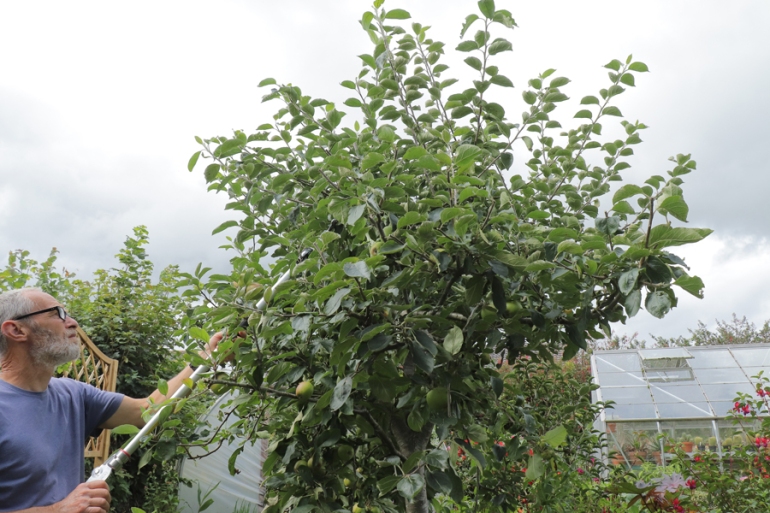
The forecast is for it to be blowy all day but mainly dry, I’d better go and see if my beans are still standing. I could have worse problems. Cornwall is a big holiday destination and there’s not a right lot to do if the weather is bad so the tourists get grumpy. At least I can hunker down and do something indoors. The Prop is in Scotland on his hols; no holiday from the monster he created in six on Saturday. He’s posted already of course and the links to everyone else are coming in fast.



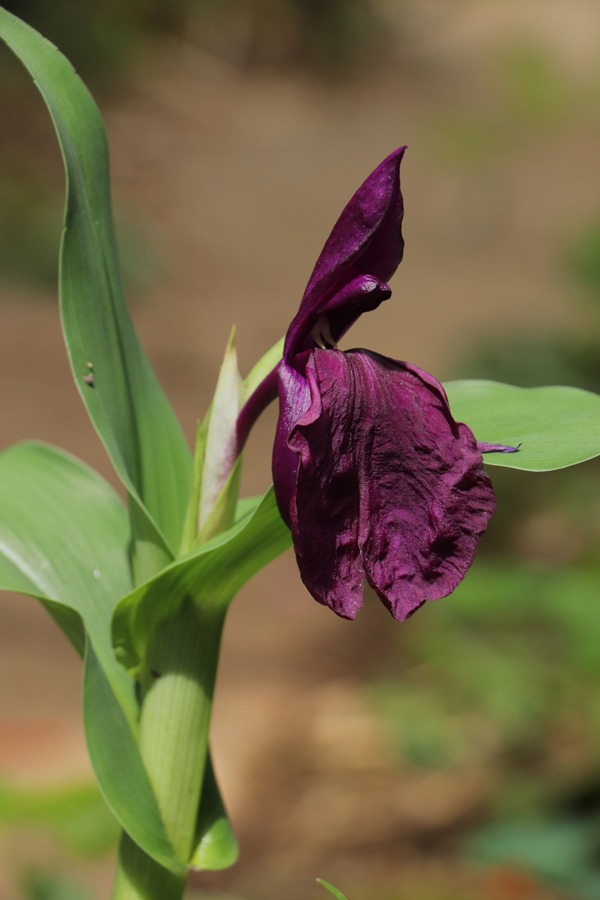



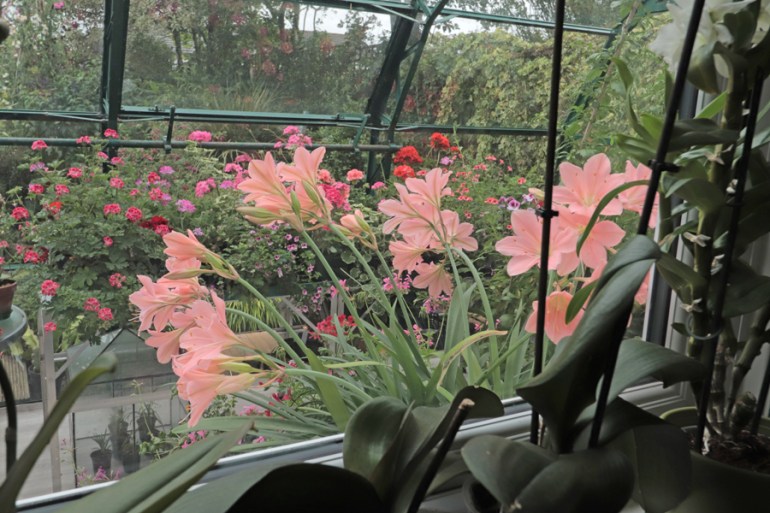
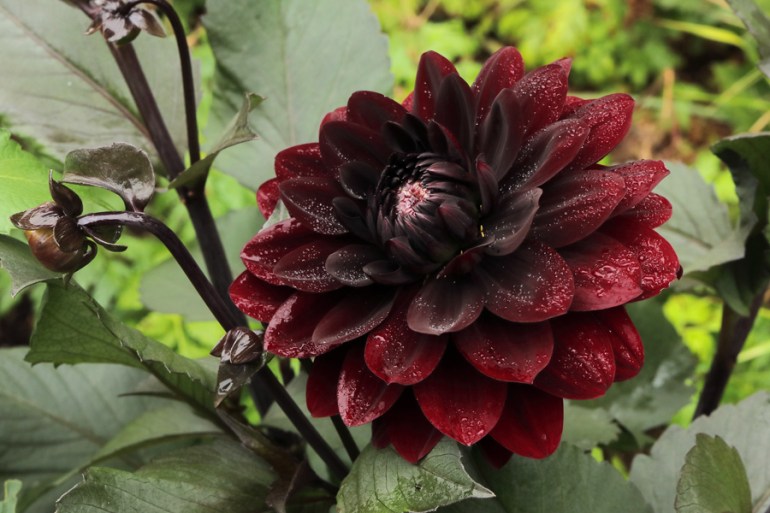
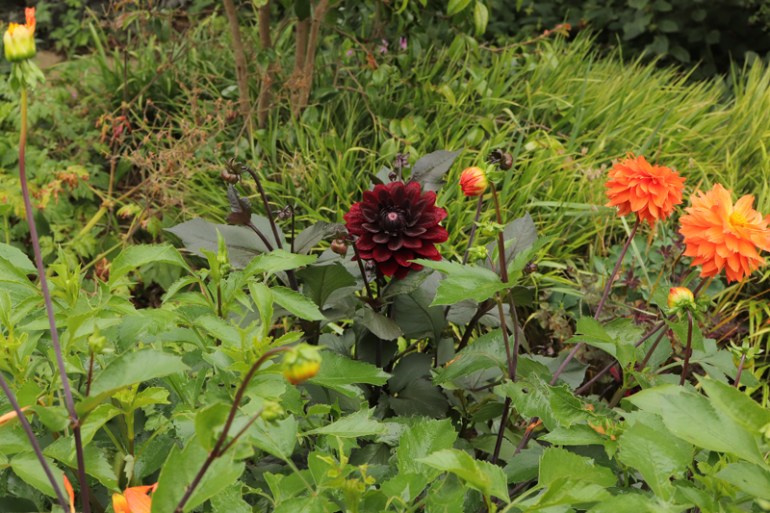


The Scarborough lily is lovely & growing in a great spot. I’m fascinated w/that fuschia & have found it online, my finger over the Buy Me Now You Know You Can’t Live Without Me icon while a little part of my brain says, now wait a minute before you buy. My finger will undoubtedly win. Love the roscoea & like the idea of overplanting anemones, but might manage to wait until next year for that idea. The apple tree pruning is interesting – I didn’t realise fruit trees were pruned while the fruit was still on, etc. Does that send more energy into the fruit & where does the new growth energy come into it?
LikeLike
If you want to keep an apple tree at much the same size long term you have to prune off most of the growth it makes every year. Do that in winter and it will regrow strongly the following year but not produce the short spurs that carry flowers and fruit. Remove most of the growth in summer and the vigour of the tree is reduced and it produces fruiting spurs from the buds on the inch or two of stem still left. That’s the theory; I have to deviate slightly from the standard advice to take account of growing conditions in Cornwall, but it works, even without it being a cordon, espalier, step-over or any of the other text book shapes. It will increase light falling on the developing fruit but if it reduces the total photosynthesis the plant is doing, that surely means less energy going into the fruit but it doesn’t seem to be very significant.
LikeLiked by 1 person
Thanks for the explanation. I shall go ruminate & undoubtedly Google follow up questions to my heart’s content now.
LikeLiked by 1 person
What is it with the Royal Horticultural Society? Does everyone do exactly as they direct? Unless I need to grow fruit trees in confined spaces, I will continue to prune them in winter. It is what is most natural for them.
LikeLike
This was advice on pruning for confined spaces but still needed modifying for where I live, conditions being a bit different from most of the UK. Winter pruning in my conditions tends to promote growth at the expense of flower to a greater degree than for most of the rest of the country.
LikeLiked by 1 person
If bloom is insufficient, too much of the important parts might have been getting pruned off. Of course, if they are blooming normally, and then losing part of their bloom to the weather, that would be a climate issue. Summer pruning promotes vegetative growth late, but with the expectation that that vegetative growth will bloom the following spring. If done properly (not that I condone it), it produces more fruiting wood in less space; but it sounds like you got that system down already.
Flowering peaches do well in the Santa Clara Valley, and they are supposed to get pruned in summer to promote dense and shrubby growth that blooms more profusely in spring. Otherwise, ‘normal’ winter pruning removes much of the blooming stems, but minimal winter pruning allows the stems to get lanky and disfigured.
LikeLike
I’m not wanting my summer pruning to result in growth at all. In much of this country you can prune in the third week of August and the buds still left won’t grow out until spring, by which time you hope that one or two of the proximal buds will form shooting spurs with only one or two distal buds making strong vegetative growth. If I prune then, because of my local climate, I get the distal buds breaking the same year but if I delay for a couple of weeks I don’t get the fruit promoting reduction in vigour that removing the foliage in August gives me. So I prune in two bites, early August leaving 5-6 inches of shoot, which are then shortened to one bud above the basal cluster in early to mid September.
LikeLiked by 1 person
Goodness! That still seems like too much work. I have seen pictures of fruited trees, after such pruning (although not precisely the same), so getting more than twice the volume of fruit for less than twice the work is probably worth the effort. They are so reliable for us, that I prefer to prune simply. There are those who prefer more intensive techniques to keep the trees proportionate to small spaces.
LikeLike
It has long seemed to me that the spindle tree on M9 that most commercial apple production uses would be just as good for home growing. They utilise vertical space, you can get several in a small space for pollination and variety. For a long time stock on M9 wasn’t available here, it is better now. I have one but it isn’t doing very well, we don’t have ideal conditions for apples here and dwarfing stocks pretty much demand good growing conditions. What I need is some M9 stocks so I can graft local varieties like Tregonna King and Plympton Pippin that resist scab and canker. A bit of extra effort is no problem with one or two small trees in a home garden, I can see it would not be economic on a larger scale.
LikeLiked by 1 person
I purchased my understock from Raintree Nursery in Morton, in Washington. I just looked through their selection of understock (rootstock) real quick, and did not see M9. You may want to look for yourself to see if there is a name that is a synonym for it.
In my own garden, I do not object to some of the extra work for certain things that I want to grow, but for the fruit trees, I want to grow them like they were grown in the orchards here decades ago.
LikeLike
I must admit I haven’t looked over here. Even more common stocks are not widely available in the retail sector.
LikeLiked by 1 person
That is partly why I got mine from Raintree Nursery. The other part is that I wanted a ‘known’ understaock, rather than just growing it from some random dwarfing understock that grew a sucker. They didn’t look like much when they arrived. They were just sticks with a few roots. They worked though.
LikeLiked by 1 person
I’m a fan of the roscoea too, such a great colour. I’ve also been summer pruning apples in my usual tinkering way – aiming for shape and sort of counting leaves. And what a lovely gardening friend you have – more rarities to educate us with.
LikeLike
“Sort of counting leaves” sounds familiar, from the advice about “two leaves above the basal cluster” as if there was a nice white line to mark the end of the basal cluster and the beginning of the rest.
LikeLiked by 1 person
Scarborough Lily is a new one to me I have to admit. That is a nice looking Dahlia Jim
LikeLike
I seem to think, possibly wrongly, that red Scarborough lilies were one of those things, like Aspidistra, that nearly everyone once had, mainly because they’re almost impossible to kill. This was half a century ago, now their owners are all dead so the plants have gone too.
LikeLiked by 1 person
I would think, like others, that pedestrian isn’t a word to describe your garden as it seems to be full of interesting plants. Exciting that your friend delivered those little plants – gardening folk are so generous.
I haven’t been blogging much lately, but I did read your post about filling spaces in the garden and found it very informative,thanks.
LikeLiked by 1 person
Again an interesting selection this week. It must have been better than getting a box of chocolates, receiving some out of the ordinary cuttings etc. The only pedestrian thing about your garden, is that you walk over it!
LikeLiked by 1 person
Granny is right. Your garden is NOT pedestrian! I love your posts because you introduce me to at least one different plant every week! #1,2 and 3 are new to me. And the dahlia is lovely, the colour of my chocolate cosmos!
LikeLike
I like to think that I combine rare connoisseur’s plants and good flowery plants and some that are both and have something for everyone. Or to put it another way, I want it all so I have to find ways to make it work. I just potted up a Chocolate Cosmos, I’m amazed the slugs hadn’t had that.
LikeLiked by 1 person
Going around the garden today, in between showers, I discovered where all the snails hang out! Maybe I need a neater garden!
LikeLike
Big slugs are my nemesis, but then again, I am theirs.
LikeLiked by 1 person
The last word I would use to describe your garden is “pedestrian”!! That plant outside your window is very pretty. Good luck on your allotment, the main damage in my garden is the gladioli, as I showed at the start of my Six-on-Saturday.
LikeLike
I’ve been up the allotment, it looks battered and my runners will need straightening but it could be worse. The friend in question has about twice as many plants as me in half the area, my head was spinning.
LikeLike
I bet the Grevillea roots within weeks! That’s the way with plants I find. I’ve tried and failed with F. procumbens, despite it growing almost like a weed for a gardening friend (refer back to second sentence). The Roscoea colours are so rich and jewel like. I’ve looked it up but can’t think of anywhere it might be happy here.
LikeLike
I’ve been surprised by Roscoea in that it seems to grow equally well in quite a range of conditions. My oldest and most established clumps are well within the root range of my big yew and have to be watered a lot but they are covered in flowers. One of the great things about doing them from seed is you can try them in lots of places without breaking the bank.
LikeLike
I did my summer pruning of apple and pear trees just before leaving home. Like you I think I will have new buds but it’s refreshing the trees now.
Gorgeous roscoeas ! 72 !!.. another plant that I see often see theses days and that I don’t have yet.
LikeLike
That’s the trouble with seed, they all germinate or none germinate. I find it very hard to throw out seedlings of things like Roscoea and unlike a lot of other things, they all survived.
LikeLiked by 1 person